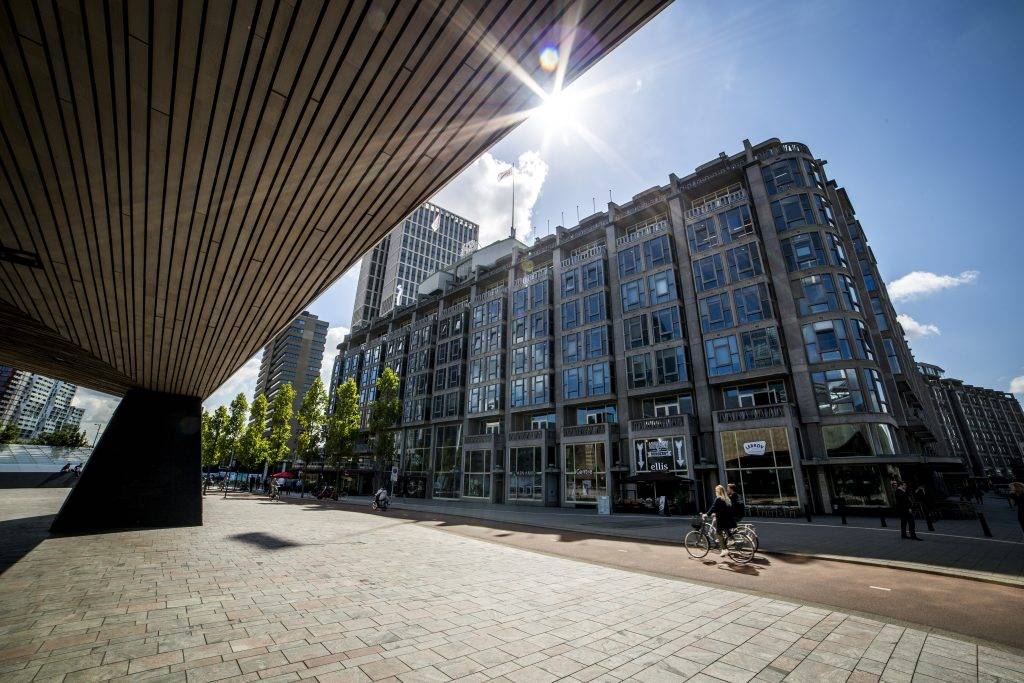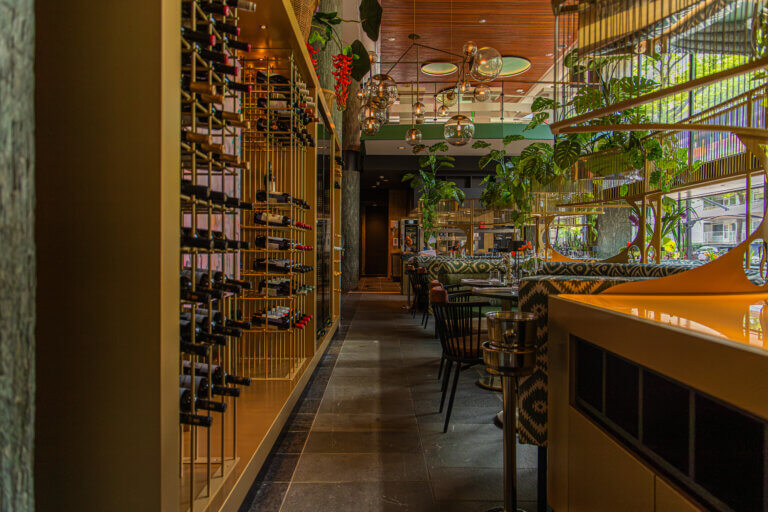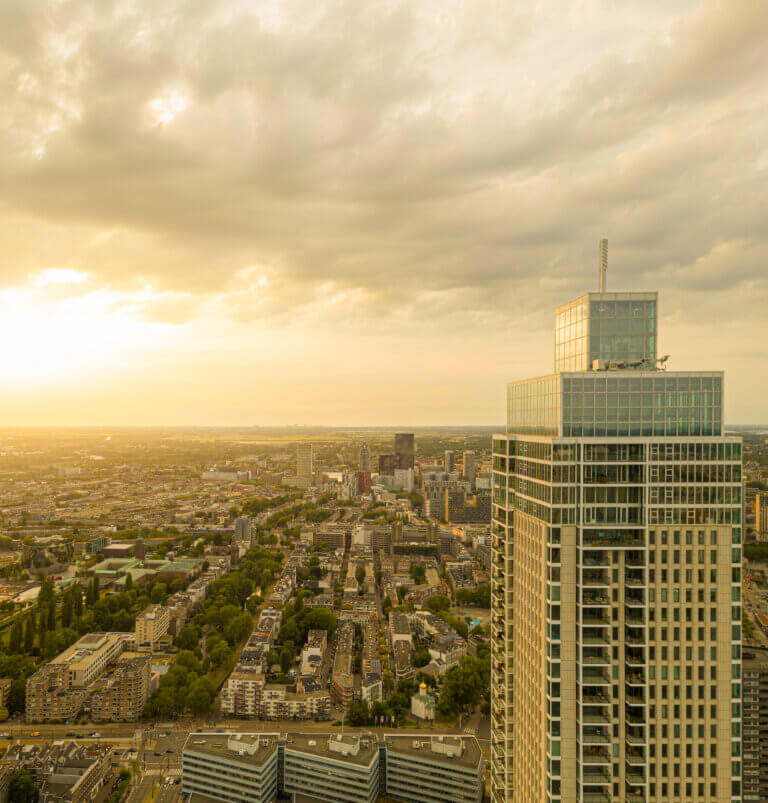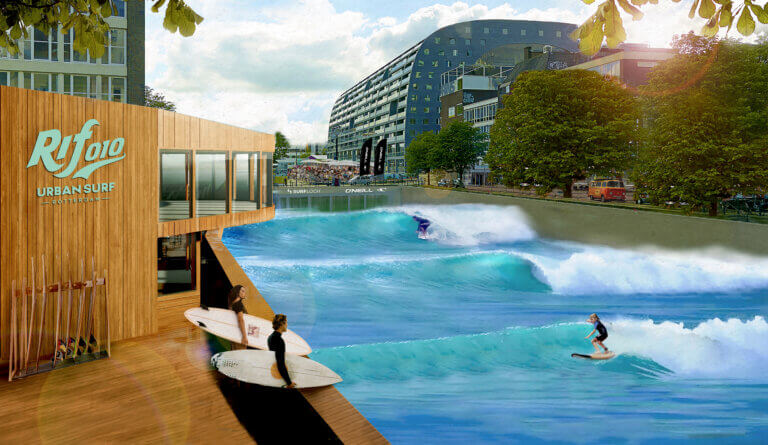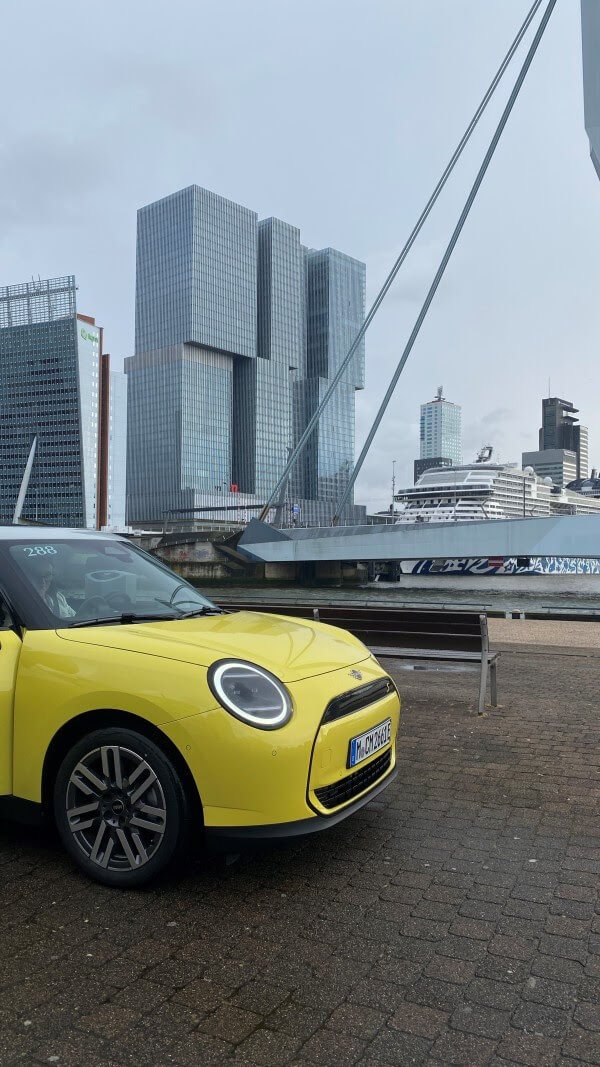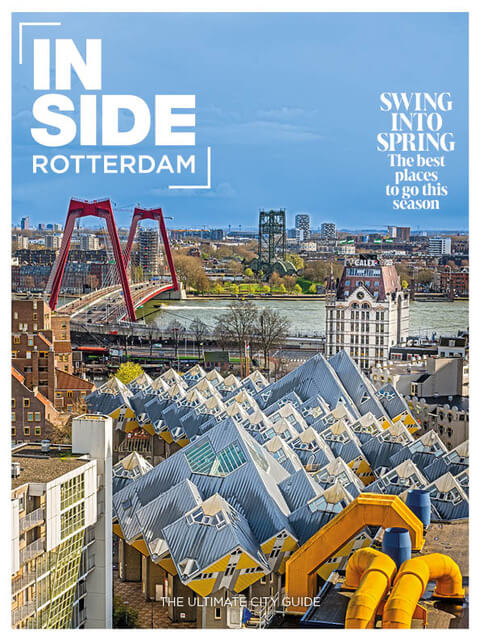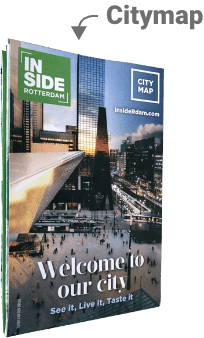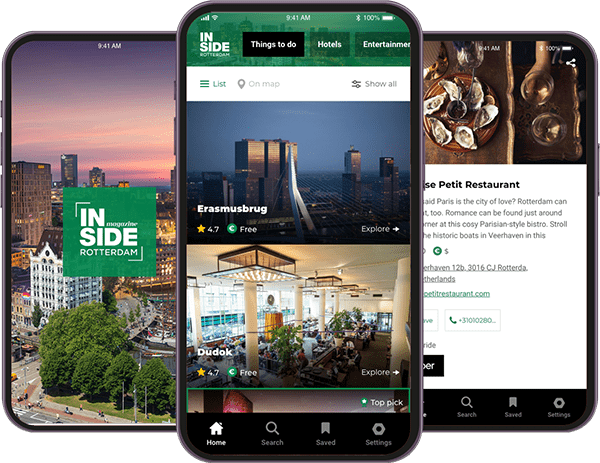A new vision for the future
Located right next to Rotterdam Central Station, the Groot Handelsgebouw is known as an icon of post-war reconstruction. Through its visionary design, it’s more in demand than ever before.
With Rotterdam’s city centre almost entirely wiped out during World War II, many entrepreneurs lost their businesses. While the war was still going on, entrepreneur Frits Pot came up with the idea of wholesalers joining forces by creating a large, multi-tenant building – quite a new phenomenon at the time. The plan fit in perfectly with Rotterdam’s ambition to rebuild itself in a forward-thinking way.
The architect most capable of grand gestures was Hugh Maaskant (1907-1977), who made his mark on post-war Rotterdam with monumental buildings such as the Industriegebouw, Lijnbaan flats, Euromast, and the Hilton Hotel. To those who found his work overbearing, Maaskant famously said in a 1971 interview: “You remind me of my wife. For 25 years she’s been looking for shoes that are large on the inside and small on the outside. She can’t find them. Life is about making choices.”
Symbol of combined forces
Fascinated by the United States, Maaskant visited Chicago’s Merchandise Mart and New York City to gather inspiration and generate ideas. The result was the Groothandelsgebouw, a multi-tenant building for wholesalers spanning 220 x 85 metres, or five football fields. Designed with the future in mind, the passageways were wide enough for two forklift trucks to manoeuvre past each other, even though there were no such vehicles in the Netherlands at the time. There were 220 parking lots, but the city only had approximately 150 car owners in the late 1940s. The building was fitted with a 1.5-kilometre driveway, elevators and multifunctional spaces. Wholesalers could rent warehouses, offices or showrooms, while the ground floor housed restaurants and shops. When Queen Juliana opened the Groothandelsgebouw in 1953, it was hailed as ‘the symbol of the combined forces and indestructible faith in the vitality of Rotterdam’.
Opening up
In the 1980s, most wholesalers moved away from the city centre, and the floors were converted into offices. Even though the Groot Handelsgebouw became a listed monument in 1991, the building lost some of its former esteem. Its façade had become unrecognisable, slathered in white paint and partly covered by billboards. With a full renovation in 2005 to bring Maaskant’s design back to its original glory, today the Groot Handelsgebouw is more lively than ever before. “The building consists of a constant grid of concrete columns, making it flexible enough to move with the times. Whether you need 50m2 or 1000m2, that’s all possible,” says Birgitta Padberg, managing director of the Groot Handelsgebouw. “With respect for its monumental status, we’re now making the building even more future-proof by opening it up. For a long time, the station area wasn’t such a great place to be at all, and the Groot Handelsgebouw was kept hermetically shut. With the liveliness around the new Rotterdam Central Station picking up, we want to draw more people in. We saw the public’s enthusiasm with The Stairs to Kriterion in 2016. It was a project with a huge scaffolding staircase leading up to the roof of the Groot Handelsgebouw, commemorating 75 years of reconstruction. People were in awe of the view and the fresh perspective on to the city. We also had a dance party with Motel Mozaïque in our parking garage in 2018. For the upcoming Eurovision Song Festival, we’ll organise special events as well. It’s great if more people can enjoy the building 24/7.”
Accessible, central location
Tenant Koen de Boo is founder of urban design firm plein06, with an office opposite Rotterdam Central Station. “We work in urban design, so we like to work in a vibrant urban environment. But we weren’t just looking for a central location, it also needed to be accessible. The Groot Handelsgebouw is open 24/7 and really feels like a mini-city within the city, with restaurants, shops and other services in-house,” he says. “The cool thing about the Groot Handelsgebouw is that it has never been empty in more than 65 years, because it’s quite rigid in its layout. The building is considerably overdimensioned, but that’s exactly what makes it flexible. It inspires us to work the same way. A building’s function can change over time if its structure can be adapted, making architecture future-proof.”
Moving towards the future
Chris Beemster is founder of WeAreReasonablePeople, a company specialised in human-centric digital innovations. “When we were looking for a new office a couple of years ago, the Groot Handelsgebouw wasn’t really on our radar. Even though its location is ridiculously good, the building had a bit of a stale image. Kleinhandel – a cluster of smaller companies within the building where we rented our first unit – was an initiative to improve this. The arrival of the Cambridge Innovation Center (CIC) shortly after, clearly confirmed the pivot that the Groot Handelsgebouw was making. The vibe has changed tremendously, and now it’s a good mix of startups and grown-up companies. We’ve already outgrown our space twice, but thankfully, it’s always been possible to move to a bigger office within the building.”

